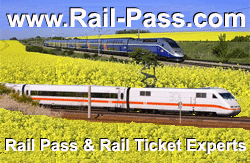Transport in BelgiumTransport in BelgiumTransport in Belgium is facilitated with well-developed road, air, rail and water networks. The rail network has 2,950 km (1,830 mi) of electrified tracks. There are 118,414 km (73,579 mi) of roads, among which there are 1,747 km (1,086 mi) of motorways, 13,892 km (8,632 mi) of main roads and 102,775 km (63,861 mi) of other paved roads. There is also a well-developed urban rail network in Brussels, Antwerp, Ghent and Charleroi. The ports of Antwerp and Bruges-Zeebrugge are two of the biggest seaports in Europe. Brussels Airport is Belgium's biggest airport. Belgium Railways Rail transport in Belgium was historically managed by the National Railway Company of Belgium, known as SNCB in French and NMBS in Dutch. In 2005, the public company was split into 2 companies: Infrabel, which manages the rail network and SNCB/NMBS itself, which manages the freight and passenger services. There is a total of 3,536 kilometres (2,197 mi), (2,563 km (1,593 mi) double track (as of 1998)), of which 2,950 km (1,833 mi) are electrified, mainly at 3,000 volts DC but with 351 km (218 mi) at 25 kV 50 Hz AC (2004) and all on standard gauge of 1,435 mm (4 ft 8+1⁄2 in). In 2004 the National Railway Company of Belgium, carried 178.4 million passengers a total of 8,676 million passenger-kilometres. Due to the high population density, operations are relatively profitable, so tickets are cheap and the frequency of services is high. The SNCB/NMBS is continually updating its rolling stock. The network currently includes four high speed lines, three operating up to 300 km/h (186 mph), and one up to 260 km/h (162 mph). HSL 1 runs from just south of Brussels to the French border, where it continues to Lille, and from there to Paris or London. HSL 2 runs from Leuven to Liège. HSL 3 continues this route from Liège to the German border near Aachen. HSL 4 runs from Antwerp to Rotterdam by meeting HSL-Zuid at the border with Netherlands. Electrification is at 3 kV DC, with the exception of the new high-speed lines, and of two recently electrified lines in the south of the country which are at 25 kV AC. Trains, contrary to tram and road traffic, run on the left. Belgium Rail Links with Adjacent Countries France — voltage change 3 kV DC – 25 kV AC
Belgium Urban Rail An urban commuter rail network, Brussels RER (French: Réseau express régional Bruxellois, Dutch: Gewestelijk ExpresNet), is operational in the Brussels-Capital Region and surrounding areas. Belgium Metros and Light Rail In Belgium an extensive system of tram-like local railways called vicinal or buurtspoor lines crossed the country in the first half of the 20th century, and had a greater route length than the main-line railway system. The only survivors of the vicinal/buurtspoor system are the Kusttram (covering almost the entire coast from France to the Netherlands, being the longest tram line in the world) and some sections of the Charleroi lightrail system. Urban tram networks exist in Antwerp (the Antwerp Pre-metro), Ghent and Brussels (the Brussels Trams), and are gradually being extended. The only rapid transit system in Belgium is the Brussels Metro. Some heavy metro infrastructures were built in Brussels, Antwerp and the Charleroi area, but these are currently used by light rail vehicles, and their conversion to full metro is not envisaged at present due to lack of funds. Belgium Road Transport Belgium Road Network The road network in Belgium is managed by regional authorities, meaning that a road section in Flanders is managed by the Flemish Government, a road section in Brussels by the Brussels government and a road section in Wallonia by the Walloon Government. This explains that road signs in Flanders are written in Dutch, even when referring to a Walloon region, and conversely, which can be confusing for foreigners who do not know the different translations of Flemish or Walloon cities in the other language. The road network in Belgium is made of highways, national (or regional) roads (the secondary network) and communal roads (or streets). Communal roads are managed at the municipal level. There are also a number of orbital roads in Belgium around major cities.
Belgium Water Transport Belgium Ports and Harbours Belgium Sea Ports
According to the 2009 CIA World Factbook, there are a total of 43 airports in Belgium, 27 of which have paved runways. Airplane passengers in Belgium can use 5 airports, the largest of which being the Brussels Airport. The other airports are the Ostend-Bruges International Airport, the Brussels-South Charleroi Airport, the Liège Airport and the Antwerp International Airport. Other airports are military airports or small civil airports with no scheduled flights. Well-known military airports include the Melsbroek Air Base and the Beauvechain Air Base. The Belgian national airline used to be Sabena from 1923 to 2001, until it went into bankruptcy. A new Belgian airline named SN Brussels Airlines was subsequently founded by business man Étienne Davignon. The company was then renamed as Brussels Airlines in 2006. In 2016, Air Belgium was founded by Nicky Terzakis, former CEO of TNT Airways, with the goal of connecting Belgium offering long-haul flights. In 2019, Brussels Airlines became a subsidiary of German airline Lufthansa. | |||||
| |||||















